Something went wrong!
Hang in there while we get back on track
Best attractions in San Gimignano

As you wander through the cobbled streets of San Gimignano, there’s one spot you can’t miss: the Torre Grossa. Rising 54 meters, it’s the tallest tower in the city and has stood as a symbol of power and wealth since the 14th century. The climb - 218 steps, no elevator - may be challenging, but the reward is a stunning 360-degree view of Tuscany’s rolling vineyards and the sea of terracotta rooftops below.
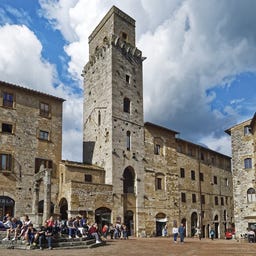
On the triangular Piazza della Cisterna, one of the two main squares in San Gimignano, you experience medieval charm in its most authentic form. Established in the 13th century, the square is located at the historic crossroads of the Via Francigena and the road from Pisa to Siena, and it once served as a marketplace and venue for festivals and tournaments.
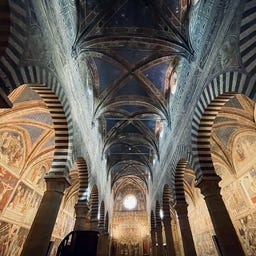
The Basilica di Santa Maria Assunta has dominated the western part of the Piazza del Duomo since the 11th century and is the most important Catholic church in San Gimignano. Originally consecrated in 1148, the building was expanded in the 13th and 15th centuries and impresses with its Romanesque facade featuring a double portal and a central rose window.
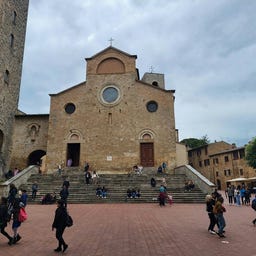
On the trapezoidal Piazza del Duomo, you experience the vibrant heart of medieval San Gimignano, where religious and political life has been intertwined since the 11th century. The impressive Collegiata stands majestically on the west side above a grand staircase, while the Palazzo Vecchio del Podestà with its distinctive towers dominates the east side.
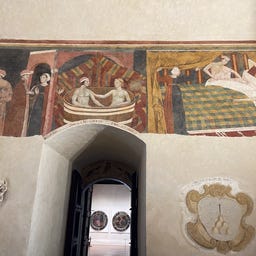
In the majestic Palazzo Comunale, which has served as the seat of government for San Gimignano since 1337, you walk in the footsteps of Dante Alighieri, who stayed here as an ambassador in 1300. The impressive building from the 13th century captivates with its characteristic facade featuring arched windows and a historic balcony for public speeches.
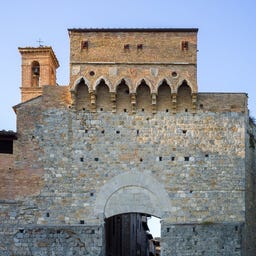
The Porta San Giovanni is the most significant city gate of the walls of San Gimignano and has served as an important access point for travelers from Siena along the Via Francigena since its completion in 1262. With its characteristic Sienese arch and the overhanging watchtower supported by intricately decorated corbels, it is an impressive example of medieval fortification architecture.
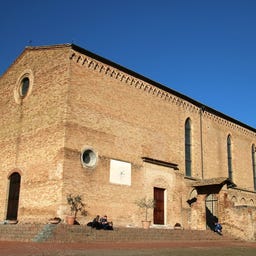
In the Church of Sant'Agostino from the late 13th century, you will find a fascinating blend of Romanesque and Gothic architecture. The simple facade is deceiving - inside, you will discover impressive frescoes by Benozzo Gozzoli from the 15th century, including scenes from the life of Saint Augustine and an unusual depiction of Saint Sebastian.
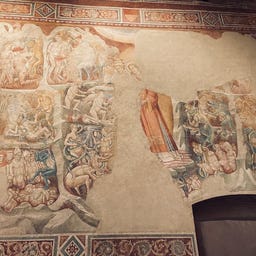
The Chiesa di San Lorenzo al Ponte takes you to one of the most historically significant sacred buildings in San Gimignano, with a history dating back to the 12th century. Built in 1240 on the site of an older Santa Lucia church, the simple structure impresses with its characteristic limestone facade and an impressive portal from the mid-13th century.
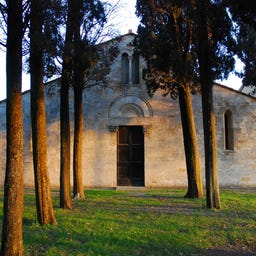
In the picturesque landscape of Tuscany, near San Gimignano, you will discover the Pieve di Santa Maria Assunta - a church with a history that dates back to 949. Originally dedicated to Saint John the Baptist, the building was rededicated to Santa Maria Assunta in the early 11th century and was consecrated after extensive renovations in 1238.
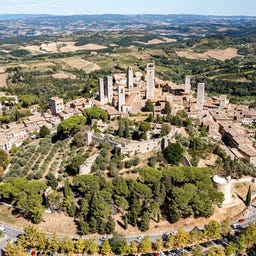
The medieval Rocca di Montestaffoli overlooks San Gimignano and reflects the tumultuous history of this Tuscan trading town. Where the Bishop of Volterra resided in the early Middle Ages, the Florentines built the current fortress in 1353 to protect the city’s population, which was suffering from plague and family feuds.
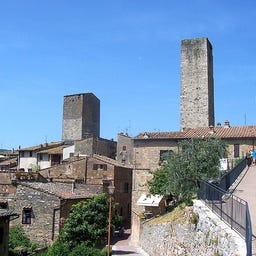
The 28-meter-high Torre Campatelli is one of the fourteen preserved medieval towers that shape the famous skyline of San Gimignano. Built in the 12th century by the Campatelli family, the tower is located on Via San Giovanni, directly across from the Torre dei Cugnanesi.
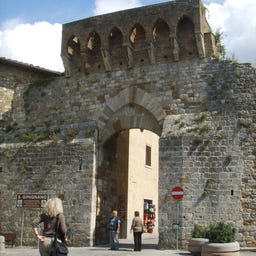
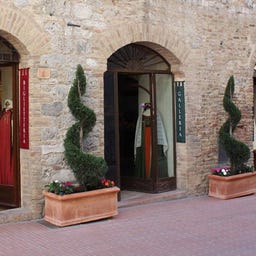
In the historic center of San Gimignano, you will find SanGimignano1300, a fascinating museum that brings you closer to the medieval history of the city. The centerpiece is a completely handcrafted ceramic model that accurately depicts the city in the 14th century. In ten exhibition rooms, you will learn all about the Via Francigena, life in the Middle Ages, and admire original watercolors by Enrico Guerrini, which showcase San Gimignano's history from the Etruscans to the present day. Opened in 2010 and recognized by UNESCO, the museum spans 800 m² in restored historic buildings, including the former Palazzo Gamucci.
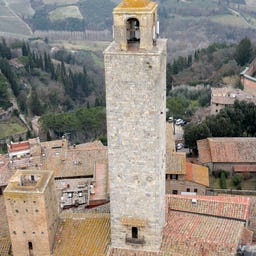
The mighty Torre Rognosa rises nearly 52 meters into the Tuscan sky as the second tallest tower in San Gimignano, still bearing witness to the rivalry of medieval noble families. Built around 1200 by the Gregori and Oti families, this defensive tower later served as a prison, which is where its nickname "the Mangy" comes from.
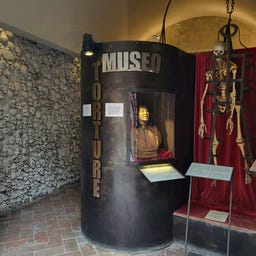
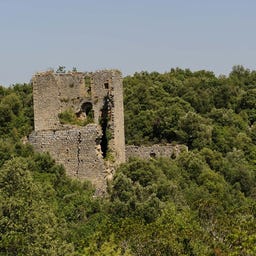
High above San Gimignano, you discover the atmospheric ruins of Castelvecchio, a medieval village now surrounded by dense forests. This strategically important settlement, with a history dating back to the Etruscan era, flourished in the 12th and 13th centuries before it was gradually abandoned after several sieges and the plague of 1348.
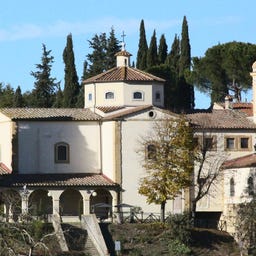
Just 5 kilometers from San Gimignano, you will find the impressive sanctuary of the "Mother of Divine Providence," perched on a hill along the historic Via Francigena. This Renaissance building originates from a vision of the mute shepherdess Bartolomea Ghini in 1668 and was consecrated as a church in 1670.
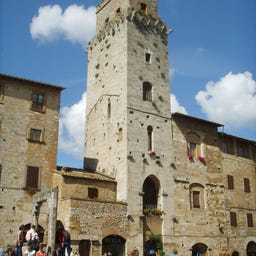
The Torre del Diavolo is one of the fourteen preserved medieval towers in San Gimignano and stands on the north side of the Piazza della Cisterna. This striking tower, whose name is said to come from a legend about the devil and its surprising height, originally belonged to the adjacent Palazzo dei Paltoncini and was later inhabited by the families Picchena, Lupi, and Cortesi.
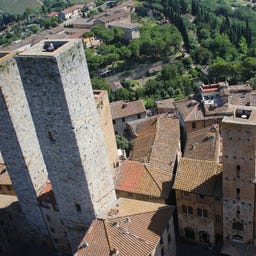
The iconic twin towers of the Torri dei Salvucci have been a defining feature of the Piazza delle Erbe in the heart of San Gimignano since the 13th century. Originally owned by the de' Mangeri, the towers passed to the powerful Salvucci family in 1257—wealthy merchants who engaged in fierce rivalries with the Ardinghelli.
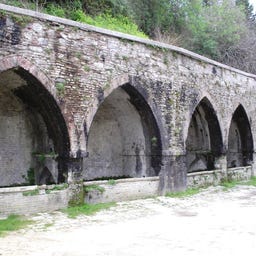
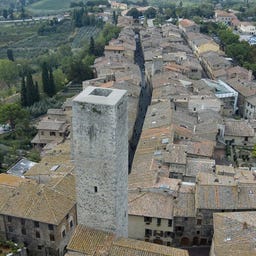
As one of the fourteen remaining tower houses of San Gimignano, the Torre dei Cugnanesi rises impressively between Via San Giovanni and Via del Quercecchio. This powerful defensive tower from the 13th century was once part of the city's fortifications and is located right next to the Arco dei Becci.
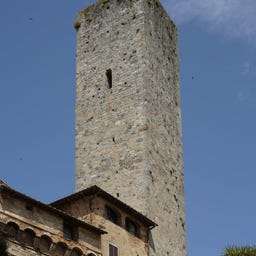
The Torre dei Becci is one of the fourteen preserved medieval towers that shape the distinctive skyline of San Gimignano. Built in the 13th century, the tower stands prominently between Via San Giovanni and Piazza della Cisterna, right by the historic Arco dei Becci.
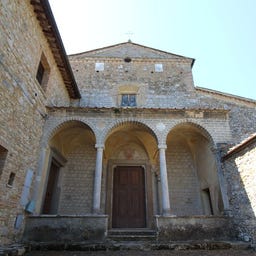
In the picturesque landscape of Tuscany, near San Gimignano, you will find the Convento di Monte Oliveto - a monastery from the 14th century, founded in 1340 and later expanded. The single-nave church impresses with its stone facade featuring a columned portico and a magnificent Baroque ceiling decoration from 1698. In the cloister, lined with arcades on three sides, you can admire stunning frescoes from the 15th century, including a "Crucifixion" from the workshop of Benozzo Gozzoli and above the portal a "Madonna with two monks" by Vincenzo Tamagni.
Just a few kilometers west of San Gimignano, the 734-hectare nature reserve Castelvecchio stretches out, featuring its characteristic limestone cliffs and Mediterranean vegetation. On the rocky hills in the southern part of the reserve, you can find the remains of the medieval fortress Castelvecchio of the same name.
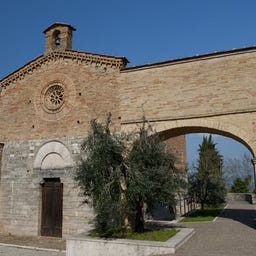
The Chiesa di San Jacopo al Tempio in the Tuscan town of San Gimignano is a fascinating testament to the history of the Templars, founded in 1096 by returning crusaders. The simple brick building impresses with its distinctive façade featuring rose windows and a Templar cross, as well as its unusual rectangular nave without an apse.
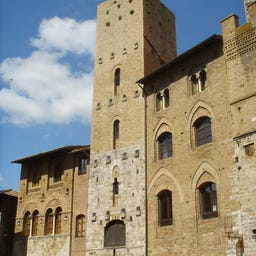
The mighty Torre Chigi stands as one of the fourteen preserved noble towers in the heart of San Gimignano and is among the most impressive examples of the medieval skyline. Built in 1280 by the Useppi family, the tower captivates with its distinctive architecture, featuring massive stone blocks at the base and brick in the upper section.
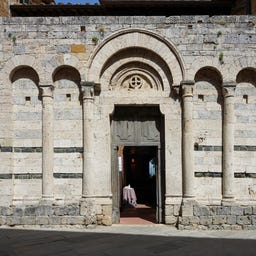
The "former Church of San Francesco" is a building located on Via San Giovanni in San Gimignano, in the province of Siena.
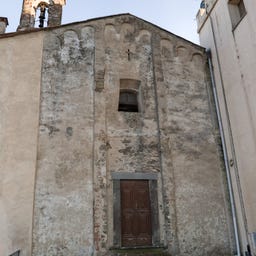
The "Abbey of the Holy Sepulchre and Saint Mary at Elmi," or more commonly known as the "Badia at Elmi," is located in the eponymous area of the municipality of San Gimignano, almost at the border with the town of Certaldo, in the province of Siena, within the diocese of Volterra.
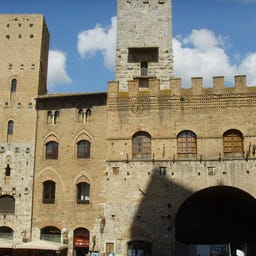
The Palazzo vecchio del Podestà at the Piazza del Duomo is one of the oldest buildings in San Gimignano, with origins dating back to the 12th century. With its characteristic stone and brick facade, three elegant windows, and distinctive battlements, the palace stands as an impressive example of medieval architecture. Above the main portal in Sienese style, you can admire the fresco "Madonna with Child, Angels, and Saints" by Il Sodoma from 1513. The history of the building is marked by several renovations, with the establishment of a theater in 1537 being particularly interesting, which has been preserved to this day.
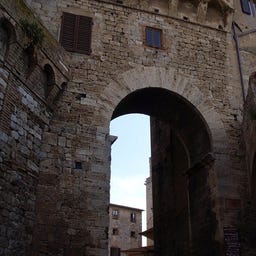
The "Arco dei Becci" was a city gate in the walls of the town of San Gimignano; it connects the small square from which Via San Giovanni originates with Piazza della Cisterna.
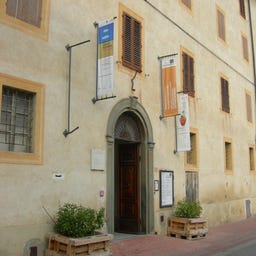
The "Spedale di Santa Fina" is located in San Gimignano. Today, it forms a museum complex with the former conservatory of Santa Chiara, which includes the "Spezieria di Santa Fina," the "Archaeological Museum," and the "Raffaele De Grada Modern and Contemporary Art Gallery."
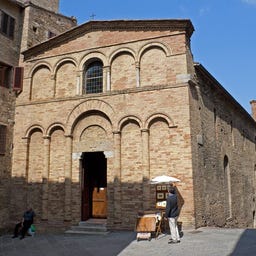
Right outside the gates of medieval San Gimignano, you discover the simple Chiesa di San Bartolo, which was originally built as a hospital along the Via Francigena. The first documented mention of the church dates back to 1196, when the Bishop of Volterra placed it under the control of San Gimignano.
"Piazza Pecori" is a small square in San Gimignano, located on the side of the Collegiata.
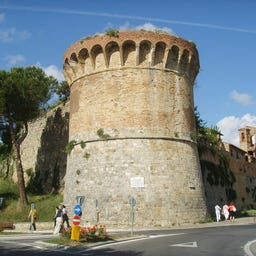
The "Bastione San Francesco" is one of the bastions of San Gimignano.
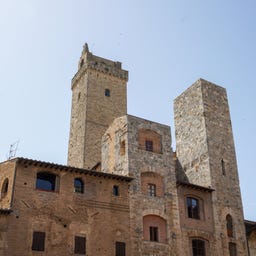
The two distinctive towers of the Ardinghelli from the 12th century are among the fourteen preserved medieval towers of San Gimignano and stand at the corner of the Piazza della Cisterna and the Piazza del Duomo.
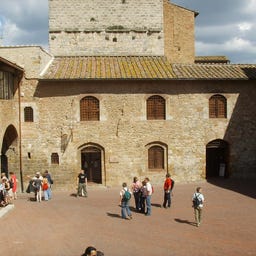
The "Museum of Sacred Art" in San Gimignano is located in the building of the ancient dormitory of the Chaplains at Piazza Pecori 1 in San Gimignano.
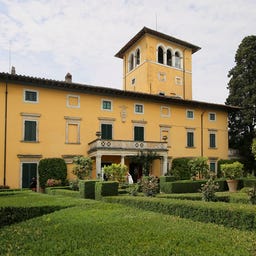
"Villa Cusona" is a historic building in the municipality of San Gimignano, located in the eponymous area of La Cusona.
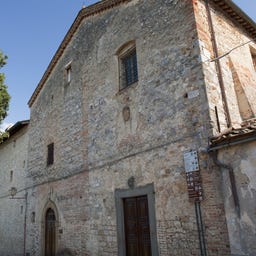
The "Church and Monastery of San Girolamo" are located on Via Folgóre da San Gimignano in San Gimignano, in the province of Siena.

The "Pellari Palace Tower" is one of the fourteen main towers of San Gimignano and is located in Piazza Pecori, but it is also visible from the center of Piazza della Cisterna.
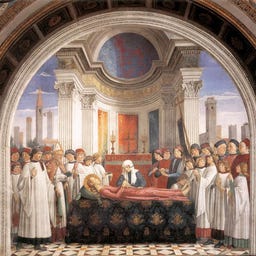
In the Collegiata of San Gimignano, you will find one of the most significant Renaissance chapels in Tuscany, the Cappella di Santa Fina. Built between 1468 and 1472 by architects Giuliano and Benedetto da Maiano, the chapel houses the mortal remains of Saint Fina beneath an intricately designed altar.
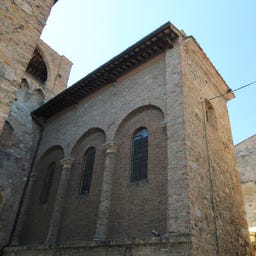
The "Church of the Madonna dei Lumi" is located in San Gimignano at the southern end of Via San Giovanni, near the San Giovanni gate, in the province of Siena, archdiocese of Siena-Colle di Val d'Elsa-Montalcino.
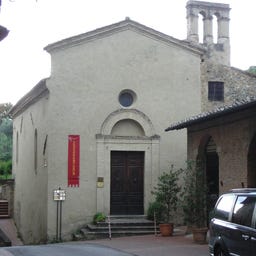
The "Church of Quercecchio" is a religious building located on Via del Quercecchio in San Gimignano, province of Siena, and is part of the Archdiocese of Siena-Colle di Val d'Elsa-Montalcino.
